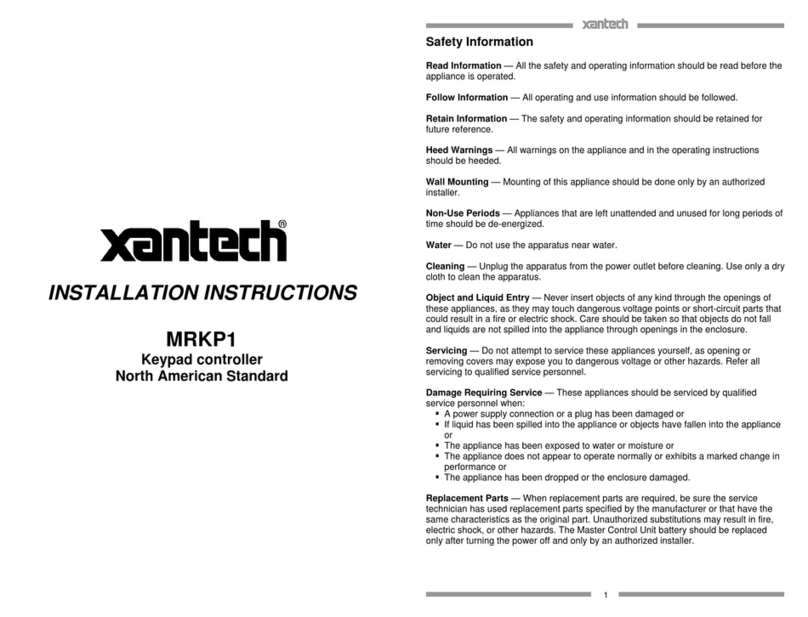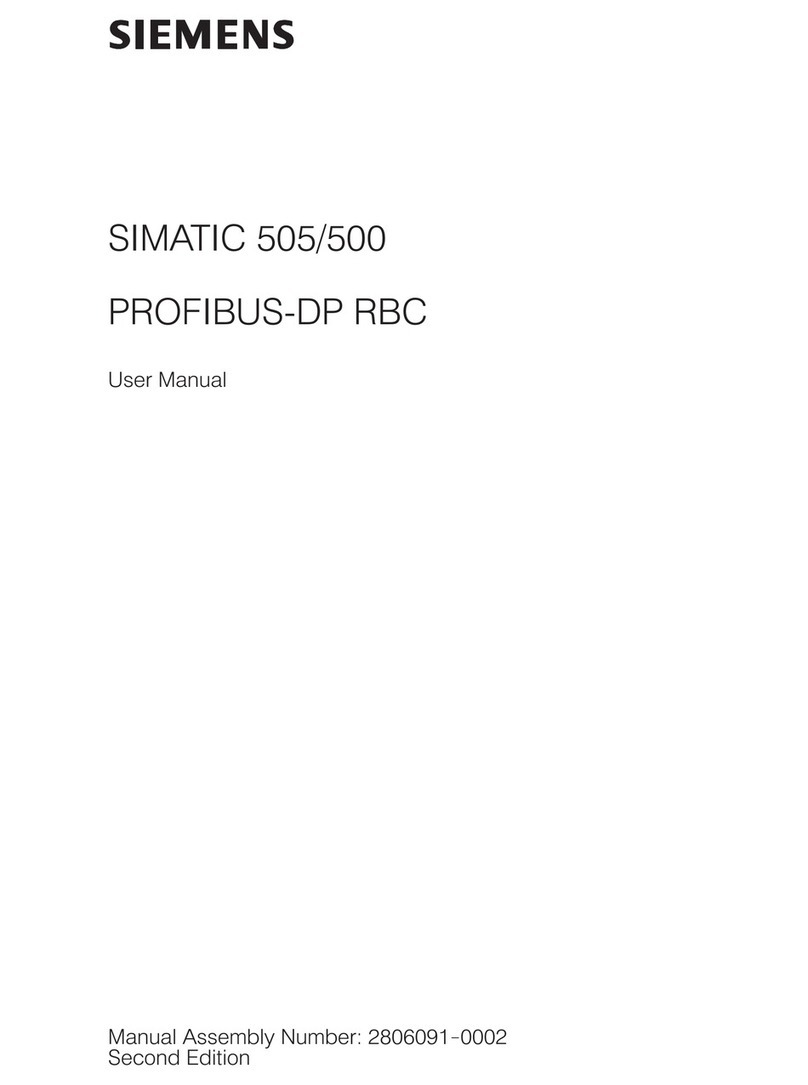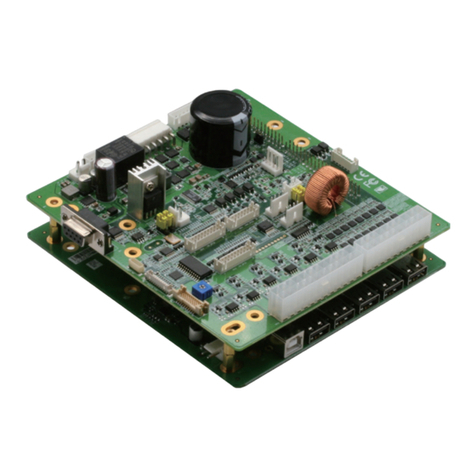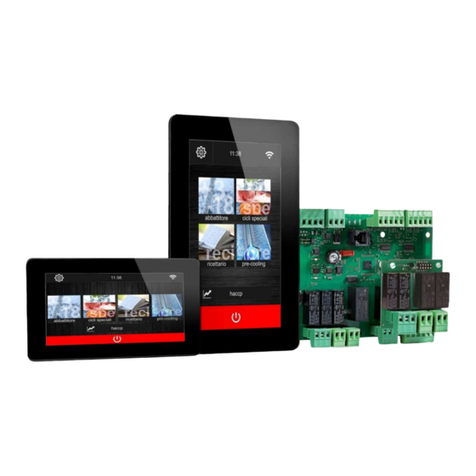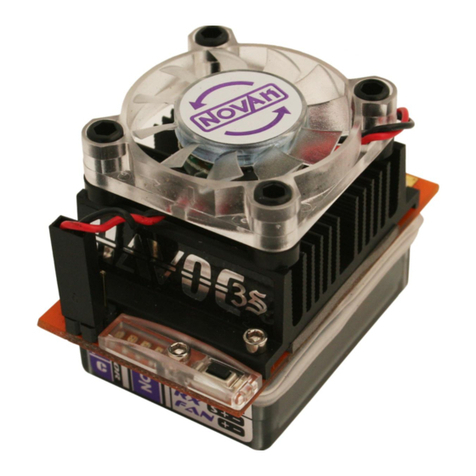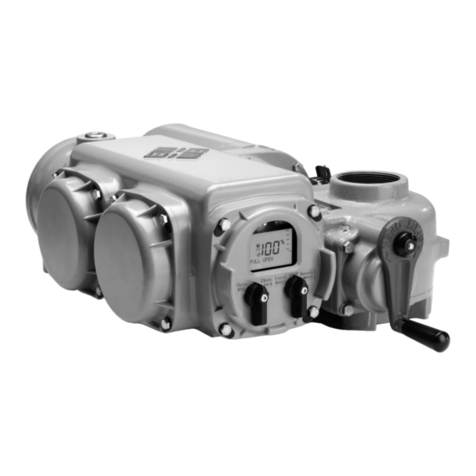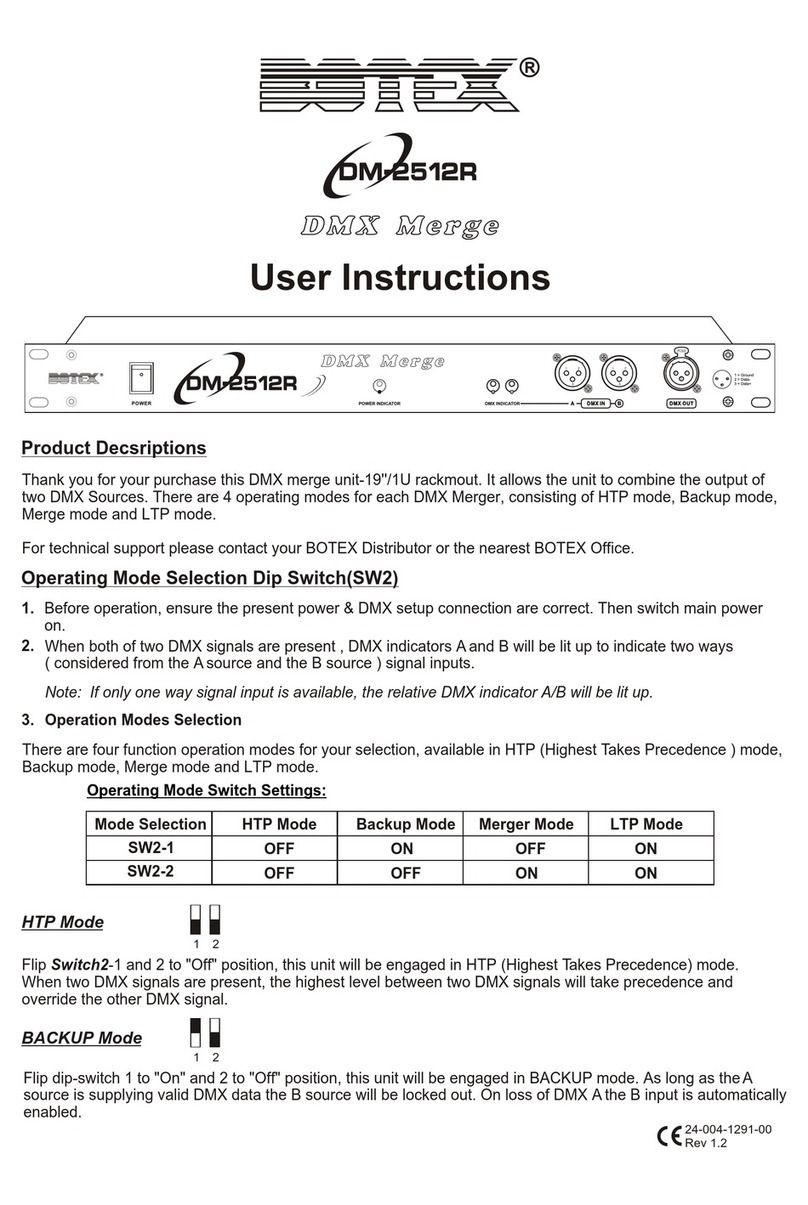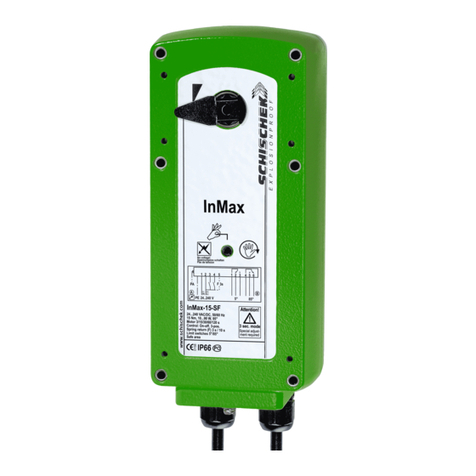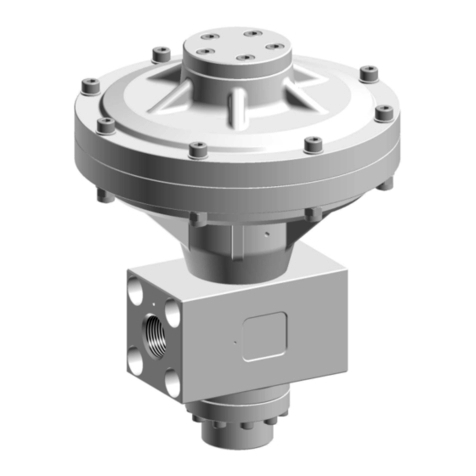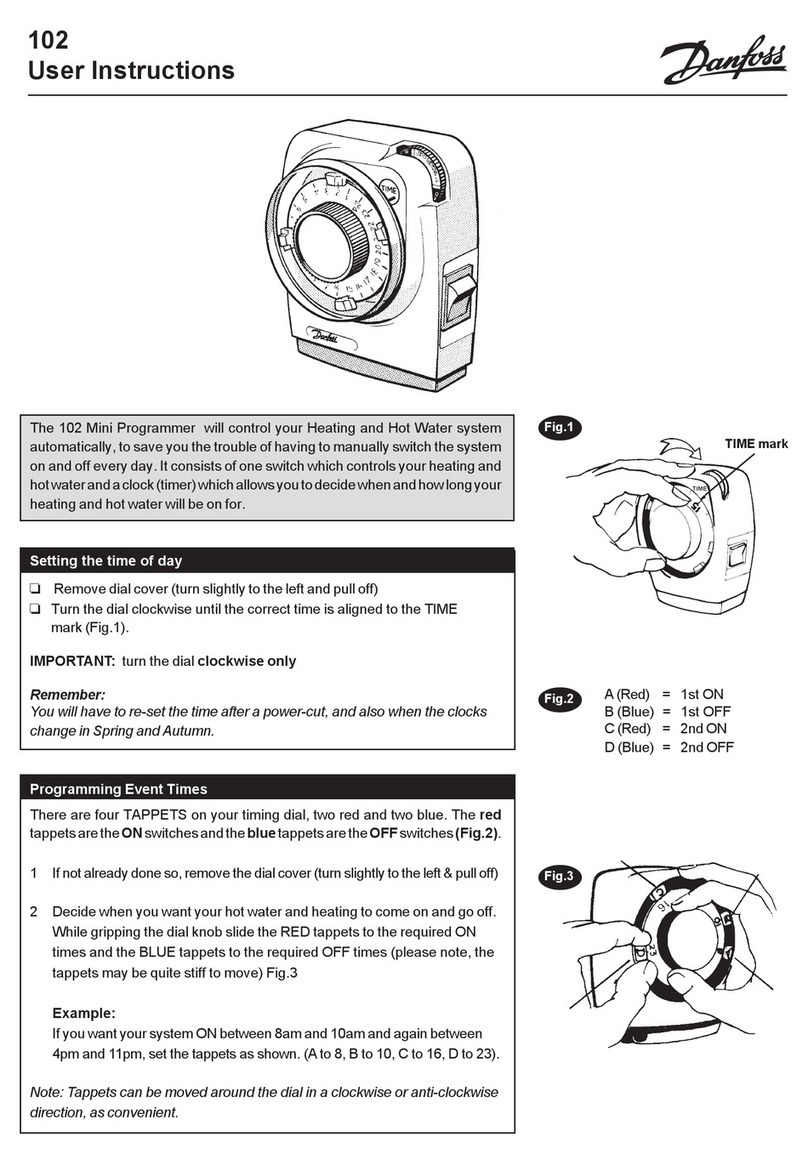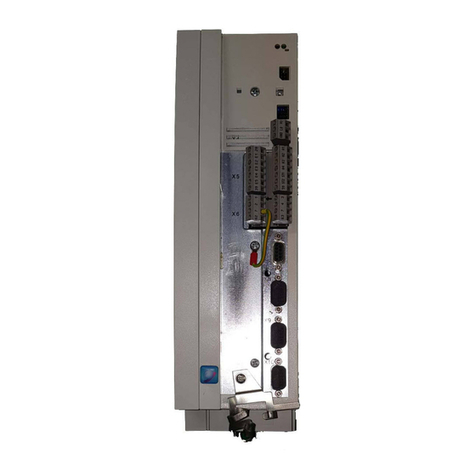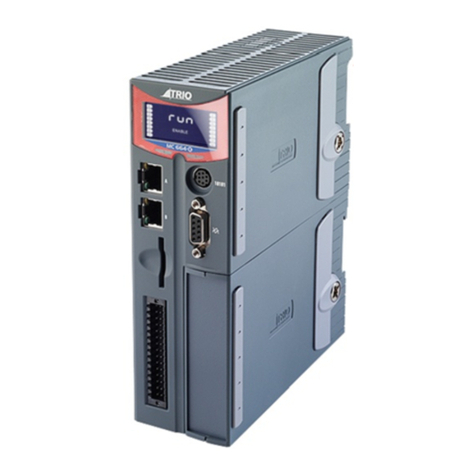Smart temp Viking SMT-920 Instruction Manual

SMT-920 Viking
Commercial multistage HVAC controller
User & Installer Manual
Ver 3.1
(Firmware 2.95+)

Page 2
Preface
The new SMT-920 “Viking” HVAC controller has been built by Smart Temp Australia using the best
components and design philosophy currently available. As a result, the Smart Temp SMT-920
“Viking” will provide your clients with many years of trouble free comfort control.
It is highly recommended that you take the time to read and understand these simple instructions
so that you can take full advantage of the many functions and capabilities that are offered in this
premium product.
The SMT-920 “Viking” product is under constant revision, upgrade and enhancement to meet the
new needs of the market. A table below provides a revision history of the manual –which in most
cases reflects product improvement.
Manual Revision History
Ver. 1
First Release.
Ver. 1.01
Some minor spelling and diagram errors corrected.
Ver. 2.0
Version II Hardware. Improved “Smart Sensor” hardware. Added BACnet MS-TP
communications. Improved AO functions. Added service Menu. Added Night purge.
Removed Modbus point data from manual –(separate communications manual provided).
Ver. 2.5
Removed outside air temperature sensor input. (outside temp only measured with Smart
Sensor) Added 0-10V input for IAQ function. Changed economy settings to better support
enthalpy control. Compressor call now suspends outside air function. Minor bug fixes and
performance enhancements.
Ver. 2.6
Some wording changes in the manual. Small spelling and diagram errors corrected. Stage down
for 4 compressor systems improved.
Ver. 2.7
Added hi / low temperature alarm function. Added PI control. Improved DST setting. Fixed night
purge bug. Increased holiday events to 30. Other minor enhancements and improvements.
Ver. 2.8
Additional wording and function description corrections. Added support for version II of the
Smart sensor with Display.
Ver. 2.9
Fixed bug that can cause loss of Smart sensor communication with change in communications
baud rate. Added Humidity Set point, added Hi/Low select function, added communications
parity select, added H, C & H&C output on aux relay menu, added basic/advanced mode in
installer menu layout, improved AH button logic, improved economy indication, clarified
information in the manual.
Ver 2.91
Minor spelling and manual layout changes
Ver 3.0
Updated Viking front label. Graphics in this manual to match.
Ver 3.1
Added “Master” function to Auxiliary relay functions (ver 2.95 firmware).
Removed BACnet
Great care has been taken in the preparation of this manual. Smart Temp Australia P/L takes no
responsibility for errors or omissions contained in this document. It is the responsibility of the
user to ensure this controller or equipment connected to it is operating to their respective
specifications and in a safe manner.
Due to ongoing product improvement Smart Temp Australia P/L reserves the right to change
the specifications of the SMT-920 “Viking” (or its components) without notice.
All rights reserved. © Smart Temp Australia P/L 2015.
Intellectual rights apply.

Page 3
Index
Preface.......................................................................2
Index..........................................................................3
Installation.................................................................4
Wiring Overview........................................................4
Powering the Viking...................................................4
Equipment Connections ............................................4
Communications Terminals .......................................5
0-10V Outputs ...........................................................5
0-10V Input................................................................5
Room Sensor Input (2 wire).......................................5
Auxiliary Inputs..........................................................5
Setting the 2 DIP Switches Functions.........................5
Commissioning Aids...................................................6
Info Window..............................................................6
Service Override ........................................................6
Service Mode.............................................................6
Relay Test Mode ........................................................6
Economy Test Mode..................................................6
Typical Wiring Diagrams ............................................6
0-10V Wiring..............................................................9
Sensor Wiring ............................................................9
Ancillary Input wiring.................................................12
Setting Installer Preferences......................................12
Operation ..................................................................23
The PIN Prompt .........................................................23
Setting the “Start” event or run temperatures..........23
Programming.............................................................23
Setting the Clock........................................................24
Setting Daily Schedules..............................................24
Set Holiday Schedules................................................25
Setting Daylight Savings Times ..................................26
Advanced Features ....................................................27
Economy Cycle...........................................................27
Economy Checklist.....................................................28
CO2 input...................................................................29
Valve Control .............................................................29
After Hours Timer......................................................29
Handover Relay .........................................................30
Compressor Lead Lag.................................................30
Tips &Tricks ...............................................................31
Communications Functions .......................................33
Faults .........................................................................35
Specifications.............................................................36

Page 4
Installation
Wiring Overview
The Viking is a DIN rail mounted device that has been designed to precisely control a wide selection
of HVAC systems in commercial applications. Great effort has been made to ensure the Viking is
very simple to set up and install ensuring reliable control of commercial HVAC systems.
A brief input / output explanation is provided below, further function specific detail is provided
through this manual.
Powering the Viking
The Viking can be powered from either 24VAC (+/-15%) or from 100 to 270 VAC.
Use one power input only.
The A&N input is used for powering the Viking from line voltage (270V max).
The terminal marked G is the 24V active terminal; the Go is the 24V common terminal.
Equipment Connections
A common input is provided for the main 5 equipment relays while a separate relay common is
provided for the 6th, auxiliary relay input. The 6th Auxiliary Function relay has multiple installer
selected functions so a separate voltage can be used with this relay if necessary. See page 17 for
more information on this relays capabilities.
A change over relay is provided for first stage heating and cooling should the Viking need control
drive open/drive closed valves. All other relays are single pole normally open.
All relays are rated at up to 300V, the Fan relay is rated at 12Amps resistive; all other relays are
rated at 5Amps resistive maximum. It is recommended that an external fuse be used to protect the
Viking relays or the equipment that the Viking is controlling.
Do not exceed the maximum current handling capacity of any of the Viking relays.

Page 5
Communications Terminals
The Viking is provided with hardware and firmware to provide MODbus RTU communications
capability. The “A” and “B” terminals are provided for communications.
The communications terminals “A” and “B” are close to the 24V input.
Take extreme care that 24V is not accidentally applied to the communications terminals or
damage to the communications capability of the Viking will result.
0-10V Outputs
2 x 0-10 Volt outputs have been provided. These 0-10V output functions are defined in the installer
manual on page 20 of this manual.
0-10V Input
1 x 0-10 Volt input has been provided. This 0-10V input function is defined in the installer manual
on page 19.
Room Sensor Input (2 wire)
The standard room temperature sensor provided with the Viking is wired to the Room and Com
(Common) terminal next to it. It is recommended that 0.25mm or larger screened pair cable is used
and the screen drain wire earthed in a suitable location. This is especially important where long
cable runs are expected (>15M) or where the sensor cable is run close to other electrical cabling.
It is recommended to use the 4 wire communicating room sensor if you have concerns about
problems associated with long cable runs or interference in the sensor wiring. As this sensor is a
digital sensor, screened cable is required on all cable runs with the screen drain wire earthed in a
suitable location.
Auxiliary Inputs
The Viking has two digital inputs. These inputs have a number of pre-set functions selectable by
the installer. A list of available functions for these inputs is provided in the advanced installer
options listed on page 19. These inputs are volt free and initiated by switching the auxiliary input
to the “COM” (common) terminal next to them.
These inputs are VOLT FREE. Do NOT apply any external voltage to these Auxiliary input terminals
or damage to the Viking WILL result. This is NOT covered by warranty.
Setting the 2 DIP Switches Functions
There are 2 DIP switches that are used to set core function of the Viking. A table outlining these
functions is provided below.
These switch functions do not require the Viking to be powered to be set.
Switch
Function
Off
On
1
If Sw 2 = Off HP - Reversing valve logic
If Sw2 = On HC - Heat Fan logic
Energise in Heat
Electric Heating
Energise in Cool
Gas Heating
2
Equipment control logic
Heat Pump
Heat Cool

Page 6
Commissioning Aids
To assist commissioning the Viking there are a number of
aids provided.
Info Window
Simply press and hold both the UP/DOWN buttons together to open the status window. This
window gives an overview of the Viking functions showing the output from both analogue outputs,
both the room and outside air temperature sensor as well as whether a relay is on or off.
AO1 & AO 2 show the 2 Analogue output values. RT shows the room temperature. OT shows
outside air temp. D1 & D2 shows the two digital input status (0=open 1= Closed). G, Y3, Y2, Y1, OB,
and Ax (aux) show the relay status (0=de-energised 1= energised). A1 shows the 0-10V input
voltage.
Service Override
Pressing both the <F1> and <F3> buttons together for 2 seconds brings up the service override
shortcut. This will permit you to lock the Viking OFF when
you wish to temporarily suspend control functions. Use the
UP/DOWN buttons to select either “Enable” or “Disable”.
This function is NOT intended to replace electrical isolation.
Service Mode
Service mode suspends all anticycle and minimum run timers built into the Viking. See the service
menu on page 22 of this manual. You can activate service mode so that it turns off automatically in
15 mins, or stays on until manually turned off again. The Viking will flash “Service Mode” on the
LCD when this mode is active to warn you that the function is active.
Relay Test Mode
Use the relay test mode with caution. The relay test will cycle all Viking relays and illuminates the
LED displays to prove relay operation. The Viking should NOT be connected to the AC equipment
whilst performing this test or damage to the AC system may be caused. See the service menu on
page 22 of this manual.
Economy Test Mode
Should you wish to test correct damper operation in Economy mode, enter the installer menu and
in the “Change Economy Settings?” menu select Economy = TEST. Exit the installer menu. The
Economy LED will be on and the LCD will show “Economy Test”. The fresh air damper will be held
at 10V and the return air damper will be held at 0v.
Typical Wiring Diagrams
A number of typical wiring diagrams are provided in this manual. This list does not represent all
possible wiring combinations and should not be used as an indication of the complete control
options provided by the Viking. There are hundreds of possible control combinations for the Viking
so not all can be uniquely shown here.
The wiring instructions shown in this section indicate generic equipment connections. They are to
be used in conjunction with the documentation provided by the Original Equipment Manufacturer
as well as other diagrams within this manual.
Care has been taken in the preparation of these drawings however responsibility falls on the
installer to ensure that the Viking or HVAC system is working correctly and in a safe manner.

Page 7
Typical Heat Pump System –4 Compressors
In this example the Viking
is running a heat pump
system with 4
compressors providing 4
stages of heating and 4
stages of cooling.
The Viking is being
powered via 240VAC in
this example.
DIP Switch Settings
Sw1 Off –Rev in Heat
On –Rev in Cool
Sw2 Off –HP Mode
Installer Options
For 4 compressor systems
Set Aux relay = Comp 4
2 Stage Cooling With Drive Open Drive Closed Hot Water Valve
The first stage heating and
cooling relays in the Viking
are a changeover type
permitting you to drive a
heating and/or cooling
valve open and/or closed.
DIP Switch Settings
Sw1 Off –Fan on with heat
Sw2 On –HC Mode
Installer Options
None required.

Page 8
2 Stage Heat With Modulating Cooling Control
In Valve Mode both the
relays and 0-10V outputs
work in tandem,
permitting the Viking to
modulate the 0-10V valve
and also call for the
circulating water pump on
a cooling demand if
required.
Belimo valve terminal
numbers are shown in this
example.
DIP Switch Settings
Sw1 Off –Fan on with heat
Sw2 On –HC Mode
Installer Options
Set Aux relay = Aux heat
SetY1= Cool
Single Stage Water Sourced Heat Pump
This is similar to a
standard single stage
heat pump except that
the auxiliary input is set
to shut the Viking down
on loss of water, thereby
protecting the system.
This fault input can be
used as a phase fail input
or any other safety
interlock.
The Viking LCD will
indicate when a fault (low
water) is detected.
DIP Switch Settings
Sw1 Off –Rev in heat
On –Rev in cool
Sw2 Off –HP Mode
Installer Options
Set AUX input 1 to Fault.

Page 9
0-10V Wiring
The Viking has 2 x 0-10 Volt outputs that can be set to perform pre-set functions that are selectable
by the installer. See the 0-10V options detailed in the installer menu shown on page 20 of this
manual.
Sensor Wiring
The Viking will accept two types of temperature sensors. The standard 2 wire sensor and the more
advanced “Smart” 4 wire sensor that are capable of performing additional control functions.
2 Wire Sensors
The standard 2 wire sensors are suitable for room temperature monitoring
only. There are a number of types of 2 wires sensors available, an overview
is provided below. 2 wire sensors connect to the “room sensor” and the
“common” terminal next to it on the Viking. 2 wire sensor are not polarity
dependent.
RS-1 –It uses 2 wires to communicate the room temperature to the Viking.
The RS-1S sensor is identical to the RS-1 described above except that it is
fitted with a switch that initiates the after-hours run timer incorporated into
the Viking controller. The RS-1S sensor is supplied as standard in the box with
each Viking controller.
The RS-A (S) additionally permits a +/- 4c adjustment of room temperature
from the installer defined set point. This sensor is perfect
for permitting the room occupants to ‘trim” the room
temperature without making large adjustments.
For projects that present difficulty in running wires for
sensors, Smart Temp also offer the RS-W (non-
adjustable), & RS-WA (+/- 4c adjustable) wireless room temperature sensor. This sensor is fitted
with an afterhours run switch. The RS-W has a typical indoor range of approximately 30 meters.
Duct sensors (RS-1D) and averaging sensors (RS-2) are also available that permit additional
temperature monitoring options.
Additional functions using the 2 wire sensor
Auto Off or Vent Mode
You can switch the Viking to Ventilation Mode (or OFF) by manipulating the sensor wiring by placing
an inline switch in the sensor cable. This works whether you use the standard (RS-01) room sensor
or the adjustable (RS1-A) sensor. The Viking automatically detects the 2 wire sensor and when
absent the Viking will behave in a number of ways as set in the Viking installer menu. See the
installer menu options on page 17 for additional information on this function.
Off –An open circuit room sensor turns the Viking OFF.
Vent –An open circuit room sensor will permit the indoor
fan only to operate during occupied “Start” periods.
Full Vent - An open circuit room sensor will run the indoor
fan for as long as the sensor open circuit exists –regardless
of current program.

Page 10
After Hours Run Function
By placing a normally open momentary press button anywhere on the
sensor line (or internally fitted in the RS-1S shown right) the Viking
after- hours run timer can be initiated or cancelled.
Smart Temp P/N RS-1S with red AH switch shown.
Combinations of the options above are possible. For example from a single 2 wire sensor it is
possible to measure room temperature, offset the room temperature thereby altering comfort
levels by +/-4c, initiate (or cancel) an afterhours heating or cooling call, shut the Viking down or
place it in fan only Ventilation Mode.
Averaging Room Sensors
When it is necessary to measure the room temperature in multiple
locations the Viking is capable of using a network of room sensors
and have the Viking control to an average of these temperatures
with the 2 wire sensor.
An example of averaging in 2, 3 and 4 places is shown using a
combination of Smart Temp RS-1 & RS-2 sensors. These averaging combinations can also take
advantage of the advanced sensor functions such as Vent Mode or After Hours start if necessary.
To use the “After-hours” function with averaging sensors the after-hours switch must be wired so
that it affects the entire sensor input on the Viking and not just one sensor. See the diagram for the
4 averaging sensors example below.
It is highly recommended that screened single pair cable of 0.2mm diameter or larger be used on
cable runs in excess of 10 meters or when the cable is run near high voltage / high frequency
cabling.
4 Wire Sensors
When you wish to use the outside economy function and/or provide a wall sensor with room
temperature and set temperature display and adjustment then the “Smart Sensors” may be used.
These are a 4 wire addressable “communicating” sensor that do not suffer from line losses or other
problems that cab normally be associated with 2 wire sensors.
Any 2 wire sensor or sensor network wired to the Viking is automatically disabled when the Viking
detects an indoor Smart Sensor fitted. You are not permitted to use 2 wire and indoor 4 wire “Smart
Sensors” simultaneously.
“Smart Sensors” are available with a LCD and buttons, or as a blind sensor without display or
buttons.

Page 11
Sensor with Display. (P/N RS-SSD)(SSD ver II –pictured requires Viking with firmware version 2.8 or greater)
Smart Temp Smart Sensors measure both humidity and
temperature and are used when economy cooling is required or
when you wish the occupants to be able to makes limited
adjustments to the Viking operation.
Two versions of Smart Sensors are available. The display version
of the Smart Sensor is fitted with a backlit LCD and buttons that
permit the set temperature to be adjusted within the Heating
and Cooling set limits as set within the Viking controller if
enabled. See setting heating & cooling limits on page 15 in the
installer menu “Change Temperature Control Limits”.
When displayed, pressing the “After Hours” button will start the after-hours run timer for the
period of time pre-set in the Viking installer menu. See after hours run timer on page 15.
If displayed, the On/OFF button permits you to turn the Viking OFF
manually, overriding any time clock schedules if set. Pressing the On/Off
button again will return the Viking to its previous state, (if the Viking is
set to manual control the Viking will be “ON”, if under time clock control
the Viking will run its schedule and be on or off based on that schedule)
Sensor without Display (P/N RS-SS)
The standard “Smart Sensor” simply measures temperature and humidity
without permitting local set point adjustment or display etc. This type of sensor is essential for use
as an outside air sensor and can be used for an inside sensor if required.
NOTE - this sensor is NOT water resistant and therefore should be mounted in such a way that
protects the sensor from rain.
Smart Sensors have their own set of “TT” terminals where you are permitted to connect a standard
2 wire dry bulb sensor for remote temperature monitoring. This input overrides the internal Smart
Sensor dry bulb sensor only. Humidity is still measured at the Smart Sensor.
Manuals are provided with the Smart Sensors that provide detail on the
functions and settings of the Sensors.
Smart Sensor Wiring
Terminals 1 & 4 power the Smart Sensor (12v DC +/- 4v is normal) while terminals 2 & 3
communicate data between each sensor and the Viking.
The sensors must be wired in series only and no two sensors should have the same DIP switch
address on the sensor network. If multiple room sensors are fitted, the Viking will control to the
average temperature / humidity of all these sensors. Alternatively if set under the installer menu
option “ Change Sensor Performance” menu shown on page 15, you are able to select High Heating
& Low Cooling when using multiple Smart Sensors(Version 2.9 Viking firmware required).
Note, when short of cabling you may power the Smart Sensor locally from a 12VDC power supply and simply
connect the Viking to the Smart Sensor using terminals 2 & 3.

Page 12
Ancillary Input wiring
The Viking has two digital inputs that have been provided to permit a digital signal (ON/OFF) to
override or compliment the various Viking functions. These inputs are very simple to use and setup.
A number of pre-set functions can be selected for either or both of these two inputs. The installer
menu provides details on these functions on page 19.
If two inputs contradict each other, input 1 has priority. Fire and fault
inputs have priority over all other functions regardless of what input
they are on.
Setting Installer Preferences
Great consideration has been given to ensure the Viking is “right for the job” out of the box,
however in rare circumstances some adjustment of the standard Viking parameters may need to
be completed to meet the specific needs of the project.
The Viking has a comprehensive advanced installer menu. This menu permits you to adjust
operational settings for the safe and effective operation of the HVAC equipment under control of
the Viking.
To enter the Installer menu, press the [F3]. If the key lock is enabled you will be given the option to
enter your 3 digit PIN before advancing to the next step. (See page 23 for instruction on doing this.)
The Viking has 3 function buttons directly under the LCD. The text above the buttons change
dynamically to indicate the function of each button in that window at that time and in conjunction
with other options selected elsewhere in the various Viking menus.
A typical installer menu window is shown here.
Selecting [NO] will move to the next option in the installer menu.
Selecting [YES] will permit you to edit the shown option,
the “After-hours“ run period in this example.
Selecting [BACK] will move you to the previous menu item or if you press and hold the [BACK]
button for 3 seconds you will be “short-cut” exited from the installer menu.
As you navigate through the various windows, the 3 main
function button’s names will change to indicate the
button’s new function for the current window.
The [SELECT] button advances you through the various functions that can be adjusted as shown by
the black box surrounding the menus, the cool set temperature in this example.

Page 13
The UP/DOWN buttons will permit you to change the currently selected option.
The [SAVE] button will save the changes and exit this window.
The [REJECT] button will exit this window discarding any changes made.
The table provided below provides a detailed description of the various menu items, their functions
and the range the values that can be set where appropriate.
A list of the Basic & Advanced Installer Menu with details
of the options within each menu is provided below.
(Basic menu shown in Ver 2.9 firmware or later)
Note - Entering the installer menu will shut down the HVAC system until you exit this menu. The
HVAC system will then restart again after having waited for any set time delays to expire once
you exit this menu.
To advance through the menu, simply press the <F1> button. (By answering “NO” to “Do you want
to enter the current menu”option will move you to the next menu option). The <F3> (Back) button
steps you backwards through the menu options.
Hint - Press and Hold the <F3> (Back) button to fast exit the installer menu.
Answering “YES” will enter the menu where you will be able to adjust the highlighted option with
the UP/DOWN buttons. Using the [SELECT] button (when displayed) will permit you to adjust other
options within the current window.
Basic Menu
Change Programming Options?
Change Auxiliary Relay Functions?
Change Auxiliary Input Functions?
Change Economy Settings?
Change Analogue Output Settings?
Exit Installer Menu?
Advanced Menu
Change System PIN?
Change Button Lock?
Change Programming Options?
Change Temperature Control Limits?
Change Setback Temperature?
Change After Hours Run Period?
Change Sensor Performance?
Change Compressor Staging Limits?
Change Compressor Control Options?
Change Compressor Timing Options?
Change Room Sensor Functions?
Change Auxiliary Relay Functions?
Change Indoor Fan Options?
Change Unoccupied Mode Settings?
Change Auxiliary Input Functions?
Change 0-10V Input Settings?
Change Analogue Output Settings?
Change Display Settings?
Change Analogue Output Settings?
Change Economy Settings?
Change Night Purge Settings?
Change PI Settings?
Change Network Override Settings?
Edit Communications Settings?
Enter Service Setting Menu?
Exit Installer Menu?

Page 14
1
Change System Pin?
Default Value = 021
The Viking has a 3 digit PIN from 000 to 199 that is used to access various menu items if enabled
by the installer. This menu permits you to see the current PIN and change it if desired.
Should you wish to change the PIN, you must enter it twice. If both PINs match, the new PIN is
updated and must be used on all future PIN requests.
NOTE: If you change and then forget this PIN the Viking must be returned to Smart Temp or an
authorised service agent for unlocking and resetting. There may be a fee for this service.
2
Change Button Lock?
Default = OFF
Use this menu item to set the security access for the various menus within the Viking controller.
Options
Off –No menu items are PIN protected - Unrestricted access to all functions.
Set Temp Only –The user can alter the Set Temperatures without requiring a PIN but will be
prompted for the PIN before entering the Schedule and Installer menus.
Set & Program Only –The user can edit the Set Temperature and Time Schedules menu but
must use a PIN to enter the Installer Options menu.
Full Lock –All menu items require a PIN to enter.
3
Change Programming Options?
Default = 7 Day 1 Event
Optimised Start = OFF
The Viking can be operated as either a programmable controller or manual controller (requiring
an external time clock or switch to turn it on or off).
Options
Always ON –If selected the Viking will turn on and run 24 hours per day, 7 days per week.
This setting is to be used when using the RS-SSD to turn the Viking On and OFF manually.
Manual –The Viking will rely on an external signal to turn it on or off. This external signal is
from the auxiliary inputs only (see Auxiliary Input Options on page 19) or the built in After-hours
Run function as described on page 19 of this manual. Also see the Handover Functions described
on page 30 of this manual. Do NOT use this function if using the RS-SSD sensor On/Off Function.
7 Day 1 Event –This option permits the Viking to turn on and off automatically as set by the
inbuilt time clock, once per day for the 7 weekly days. The On event is named “Start” and the
Off event is named “Stop”
7 Day 2 Event –This option is similar to the 7 day 1 event as described above however you are
permitted 2 starts and 2 stops per day. This is useful should you wish the air conditioning to be
off for part of the day (during a lunch break for example) or when you wish the Viking to start
during one day, run past midnight and stop the next day. (See tips & tricks on page 31 of this
manual for help on doing this).
365 Day 1 Event –This option permits you to additionally set up to 30 holiday schedules in the
Viking that will override the normal 7 day 1 event program. Useful for pre-programming the
Viking to be OFF for Christmas holidays for example.
365 Day 2 Events –Same as 365 day 1 event but with 2 events (start & stops) per day.
Optimised Start OFF / ON. ON will start the HVAC before the programmed start time to ensure
the HVAC system is at the set temperature BY the start time.

Page 15
4
Change Temperature Control Limits?
Default = Heat 49°C & Cool 6°C
If permitted, the user can have the ability to adjust the heating and cooling set points. The range
of the user adjustment can be limited if desired by setting the values below.
Options
Heat –The highest heating set point that can be adjusted. (6°C to 49°C)
Cool –The lowest cooling set point that can be adjusted. (6°C to 49°C)
Note: Regardless of where these set point limits are set, the Viking will ensure that at all times
the cooling set point is above the heating set point. If necessary, the Viking will “push” set points
apart to ensure the set points do not overlap.
5
Change Setback Temperature?
Default = Heat Off & Cool Off
Rather than shutting the heating and cooling system completely off during the STOP events, the
Viking can automatically maintain a more energy efficient set point during this time.
This value can also be used as a set temperature during Holiday events if desired. See “Setting
Holiday Schedule” on page 25 of this manual.
The Fan will run in “Fan Auto” mode to maintain any set back temperatures that are set.
Options
Heat –The setback heating temperature. (Range Off –then 6°C to 49°C)
Cool –The setback cooling temperature. (Range 6°C to 49°C then OFF)
6
Change After Hours Run Period?
Default = 2 Hours
The Viking has a built in after-hours timer that, when initiated will replace the current “Stop” or
“Holiday Event” set points with the “Start” heating and cooling set points and Fan Mode. This
override period is timed and at the conclusion of this timed period the Viking will return to the
programmed set points for the current date and time.
Information on initiating the after-hours timer can be found on page 27 of this manual.
Hint: To disable this function set this value to OFF
7
Change Sensor Performance?
Default = 0.0 & Nor& SS
The Viking has 3 temperature sensor inputs.
Room - The 2 Wire Room sensor input
O/A - Smart outside air sensor
Options
Calibration –adjust this value of the selected sensor by +/- 4.5°C.
This is used mostly to offset any temperature accuracy errors caused by long cable runs with
the 2 wire sensors. Adjusting any Smart Sensor readings should NEVER be necessary.
Response Speed - The Viking will permit you to select how rapidly it will respond to room
temperature changes.
Options are VFAST / Fast / Nor (Normal) / Slow / VSLOW
High / Low select (Ver 2.9 or later firmware) - (only applicable with multiple indoor Smart
Sensors)
SS = Standard HI = High Select LO= Low Select

Page 16
8
Change Compressor Staging Limits?
Default = 1.0°C
Each of the Viking’s primary 3 compressors outputs have their own settings to control how each
compressor performs as part of the overall system. The 4th compressor if enabled, uses the same
setting set for the 3rd compressor.
You can set in 0.5 degree increments how far away “this” compressor will start from the
previous compressor’s start point.
Options
Off to 5°C –When selecting OFF for any compressor, it and subsequent compressors are also
turned to off.
Note: Compressor 1 cannot be turned OFF.
If enabled, compressor 4 uses all compressor 3 settings.
9
Change Compressor Control Options?
Default = Various
This menu item permits you to fine tune the Viking’s compressor control settings.
Options
Lead / Lag –Default = OFF. This option attempts to even the wear on air conditioning systems
with multiple compressors. When all compressors are off (either due to the room temperature
being in the dead band or via time clock etc turning the system off) the compressor numbers
will rotate 1 value so that next time the system starts, compressor 2 will start first etc.
Important –The Lead Lag Function will use all compressors under
Viking control as indicated in the Compressor Control Options menu
as described above, so it’s vital that the number of fitted compressors
is correct.
See more details on the Viking Lead Lag Function on page 30.
Smart Upstaging –Default 5 mins. The Viking does not simply measure the difference between
the room temperature and set temperature to bring on various stages of heating or cooling.
The Viking will give a running compressor a chance to bring the room to temperature on its own
before starting additional compressors in an attempt to reduce energy consumption. The
“Smart Staging” settings will determine the minimum time the Viking will wait before bringing
on additional compressors.
Timed Upstage –Default 30 mins. This setting will bring on additional compressors regardless
of how close the room temperature and set temperature are to prevent a struggling compressor
attempting to bring a room to set temperature on its own.
10
Change Compressor Timing Options?
Default = 3 Mins & OFF
An adjustable compressor anti cycle and minimum run timer has been provided to improve
compressor protection.
The anti-cycle timer will prevent the compressor from restarting too soon after it has shut down
and when the Viking first powers up (soft starting).
The minimum run timer will keep the compressor running for a minimum period of time, again
to prevent short cycling but more so to reduce long term energy consumption of the system.
Options
Anti-Cycle Delay –Adjust this from Off to 3, 4 or 5 mins (Default = 3 Minutes)
Minimum Run Time –Adjust this from Off to 2, 3, 4 or 6 mins (Default = OFF)

Page 17
11
Change Room Sensor Functions?
Default = OFF
The room temperature sensor wiring can be used for additional functions other than just
measuring the room temperature. When this sensor is open circuited (or permanently short
circuited) and seen as missing by the Viking, additional functions can be performed.
Options
Force Off –When the room temperature sensor is absent, the Viking will shut down.
Ventilation –When the room temperature sensor is absent the Viking will keep the indoor fan
running during the “Start” event programmed time. There will be no heating or cooling.
Full Vent –When the room temperature sensor is absent the Viking will keep the indoor fan
running regardless of time or set schedules. There will be no heating or cooling –use this with
caution.
Note: A fire or fault input will shut down both Full Vent and Ventilation Modes instantly.
12
Change Auxiliary Relay Functions?
Default = OFF
The Viking is fitted with an ancillary volt free relay to which you are able to assign pre-set
functions. Many of these functions have an additional setting associated with them, such as
when selecting the high temperature alarm the Viking permits you to set the alarm value.
Options
Off –This relay is not used.
Time & After Hours –the auxiliary relay will close when the Viking is running the “Start”
program or when the after-hours timer is active. See Tips and Tricks on page 31 of this manual
for details on using one Viking as a master time clock.
After Hours Only –the auxiliary relay will close only when the after-hours timer is running. This
can be used to pass the after-hours run information to additional devices.
Time Clock Only –The auxiliary relay will close when the Viking time clock is running the “Start”
program. If the after- hours timer is initiated, this relay will remain inactive.
Compressor 4 –The auxiliary relay is assigned as compressor 4. Compressors 1 - 3 must be
active for this function to operate. See Compressor Staging Limits on page 16 of this manual.
Aux Heat –In this mode, the auxiliary relay is assigned as auxiliary heat relay, providing a
heating call after all compressors have finished calling for heat or as a 2nd stage of heating in
Heat Cool Mode (Sw 2 ON).
Heat and Cool –The auxiliary relay will close whenever the Viking is calling for heating or
cooling. (ver 2.9 or later)
Cool –The auxiliary relay will close whenever the Viking is calling for cooling. (ver 2.9 or later)
Heat –The auxiliary relay will close whenever the Viking is calling for heating. (ver 2.9 or later)
Low Alarm - The auxiliary relay will close when the room temperature falls below the low
temperature alarm limit. It will auto reset when the room temp rises more than 2°C above the
alarm set point. Note –if set, the Low Alarm will operate as long as the Viking is powered, even
when stopped or OFF. (ver 2.9 or later)
Hi Alarm –The auxiliary relay will close with the room temperature exceeds high temperature
alarm limit. It will auto reset when the room temp falls more than 2°C below the alarm set point.
Note –if set, the High Alarm will operate as long as the Viking is powered, even when stopped
or OFF. (ver 2.9 or later)
Economy - The auxiliary relay will close whenever the Viking calls for economy mode.
Humidity - This permits the Viking to control a humidifier if the indoor humidity becomes low.
You are also given the opportunity to set the alarm threshold. (ver 2.9 or later)
Network –The auxiliary relay can be controlled (opened or closed) via MODbus
MASTER –The Auxiliary relay will close whenever the Viking is running and open when the
Viking stops. This takes into account any axillary input calls that may override the Viking to Run
or stop outside of programmed hours. (ver 2.95 or later )

Page 18
13
Change Indoor Fan Options?
Default Locked ON & No Purge
The indoor fan in the Viking can be controlled by the user if desired (permitted to select Auto
Fan or Fan On Mode) or locked into On or Auto Mode as set by this menu.
Options
Unlocked –The user can select Fan Auto or Fan On Mode for the “Start”event without
restriction.
Locked Auto –The user cannot adjust the Fan Mode. When the “Start” event is running the fan
will be in Auto Mode where the fan will cycle on and off with the heating and cooling.
Locked On –When the “Start” event is running, the fan will be held on continuously regardless
of the need for heating or cooling. The fan will turn off at the ‘Stop’program.
Purge - A fan purge period of 0 (Off) to 10 minutes, in 1 minute steps, can be set. This will hold
the fan on for a purge period of time after the set point has been reached and the heating and
cooling has stopped.
14
Change Unoccupied Mode Settings?
Default Heat / Cool Off /A Fan
The Viking has an “Unoccupied” Mode. When in unoccupied mode the current active set points
and fan mode are replaced by the Heat, Cool and Fan settings in this menu. The Unoccupied
Mode can be initiated via the auxiliary inputs (see page 19) or via the Holidays Function (see
page 25).
Options
Cool –The cooling set point to use during the unoccupied period. (Default OFF)
Heat–The heating set point to use during the unoccupied period. (Default OFF)
Fan–The Fan Mode to use during the unoccupied period. (Default Auto)
Caution –If you set the Fan Mode to “ON” in this menu and then use the unoccupied mode for
a holiday event, then the fan will run continuously, 24 hours per day during that holiday event
period regardless of the need for heating and cooling. See Holiday Programming on page 25
for more detail.

Page 19
15
Change Auxiliary Input Functions?
Default = Not Used
Two auxiliary inputs have been provided. These are digital inputs and each of these 2 inputs has
the same list of options. In the event of a conflict, auxiliary input 1 will have priority. A fire or
fault input regardless of what input calls them has absolute priority over all Viking inputs.
Options
Not Used –This input is disabled.
Fire –Normally closed input. If this input is open the Viking will shut down all functions, all relays
will open and both 0-10V signals will be 0 volts. This is an instant shutdown; minimum run times
and fan purge periods will be cancelled. The LCD will show “FIRE” to indicate this mode is active.
Occupancy –Initiating this function will cause the Viking to replace the current set points with
the installer set Occupancy set points and Fan Mode for as long as this input is active.
AH Initiate –A short On/Off signal (Pulse) on this input will initiate or cancel the Viking’s after
hours run timer function. During the after-hours run time, the Viking will use the “Start” set
points and Fan Mode for the timed after hours run period.
Force On –When this input is active, the Viking will use the “Start”program’s temperatures and
Fan Mode for as long as this input is active.
Delay Start –Initiating a Delay Start is similar to the Force On Function described above except
that rather than starting immediately the Viking will wait a random period of time, up to 90
seconds, before starting the A/C system. This is useful if you have multiple Vikings running from
a single time clock to protect the building’s power system.
Fault NC –Closing this input will shut the Viking down. The LCD will show “System Fault”.
Fault NO –Opening this input will shut the Viking down. The LCD will show “System Fault”.
Fresh Air –When this input is active and Economy Mode is enabled, the Viking will open the
fresh air damper and close the return air damper to introduce fresh air into the building.
Typically this input is connected to an indoor air quality monitor.
Auto –When Auto mode is used, the Viking will run based on its time schedule only when this
input is closed and stop when the input is open. This mode fits standard Mechanical
Auto/On/off switch logic. (Ver 2.9 or later)
16
Change 0-10v Input Settings
Default = OFF
Off - This input is not used.
IAQ Threshold - The voltage seen at the 0-10V input below this value will not initiate any fresh
air introduction into the building. This is the normal “background” level that is acceptable.
Range is the amount the fresh air damper will open when the 0-10V input measures 10V.
For example, if using a 0-2000ppm CO2 sensor where you want the damper to open to a
maximum of 60% when full fresh air is required and want the damper closed when the indoor
CO2 is below 500ppm. Set the threshold for 2.5V ((2000/500ppm)=4 10V/4 = 2.5)) Set the
range to 60%
17
Change Display Settings?
Default = Deg C & 12 Hour
Set the default temperature and time format display for the Viking from this menu option.
Options
Display –Degree C or F format.
Clock –12 hour (am/pm format), 24 hour format or Off
(Note Setting the clock to OFF will force the Viking into Manual Mode )

Page 20
18
Change Analogue Output Settings?
Default = NOT USED
The Viking has two analogue outputs which can be assigned specific functions as detailed below.
Each of the two analogue outputs has the same functions.
Options
Not Used –The output is not used. Output is 0V
H & C –By selecting this option this single output will modulate for both heating and cooling.
This is mostly used by BMS systems for example to obtain feedback about how far the room is
from set point for both heating and cooling modes.
Cool –This sets the analogue output to control a 0-10 cooling valve. When you select “Cool”
you are then given the option to select the span for the cooling valve, i.e. how far above set
point the 0-10V output is at 10V.
Heat –This sets the analogue output to control a 0-10 heating valve. When you select “Heat”
you are then given the option to select the span for the heating valve, i.e. how far below set
point the 0-10V output is at 10V.
Return Air –This assigns the analogue output to control the inside economy cycle damper.
When economy is used, this damper will modulate closed as more outside air is used.
Fresh Air –This assigns the output to control the outside economy damper. Normally this is at
0V until economy air is used but can sit above 0V if the DVT function is set (see Change Economy
Settings below). The outside damper is also used for the Night Purge Function as described
below.
Type –0-10V or 2-10V type valves. Note - This applies to BOTH Analogue outputs.
19
Change Economy Settings?
Default = OFF
Please note, you must assign one of the 0-10V analogue outputs as described above before
being permitted to adjust the economy settings within this menu. The Viking will
automatically change this setting to “ON” when you assign at least one analogue output to
Fresh or return air.
When using outside air for free cooling (see Economy Function on page 27) the suitable
temperature range of outside air can be defined.
Options
DVT- Off to 90%. The Day Ventilation Time Function will open the outside air damper by this
fixed amount regardless of other economy function settings but only while the building is
occupied. This is to introduce a fixed amount of fresh air into the building to keep the indoor air
quality acceptable when the building is occupied. The damper will close when the building is
unoccupied to prevent heat loss overnight.
Off - Economy cycle is not used / required.
On - Economy Cycle is ready.
Test - Viking will behave as if 100% outside air is required.
RH Limit –When the outside Smart Sensor is used and the normal 2 wire sensor is used for
room temperature measurement the Viking will permit you to set a high outside relative
humidity limit. When the outside air is above this level outside air will not be used for cooling.
If both inside and outside Smart Sensors are used, then the economy settings window will show
“Enthalpy Based”. There are no adjustments required as this Viking will compare the inside and
outside air enthalpy and base the use of outside air on these values.
Note: When the outside air cannot adequately cool the room the Viking will suspend the use of
outside air and replace it with electric cooling.
Table of contents
Popular Controllers manuals by other brands
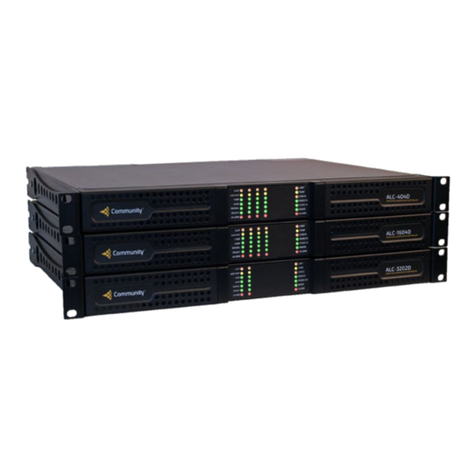
Community
Community ALC-404D Installation and user guide
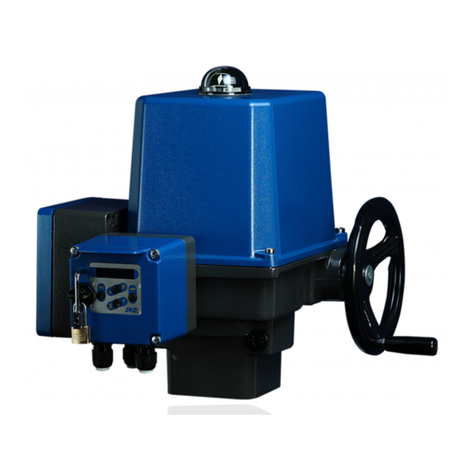
PS Automation
PS Automation PSQ 103-AMS operating instructions
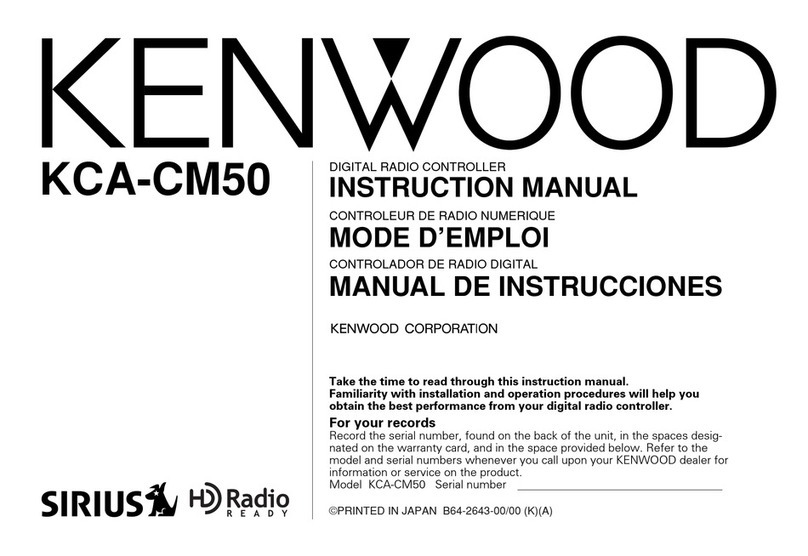
Kenwood
Kenwood KCA-CM50 instruction manual
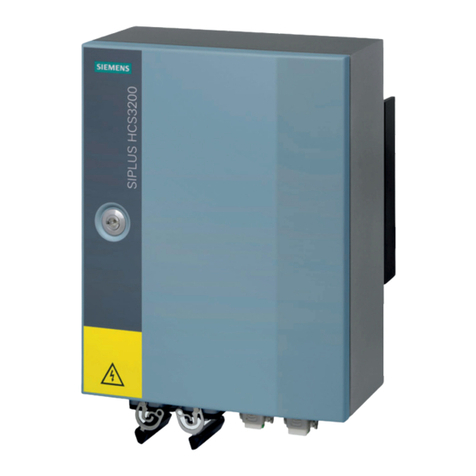
Siemens
Siemens SIPLUS HCS3200 Compact operating instructions
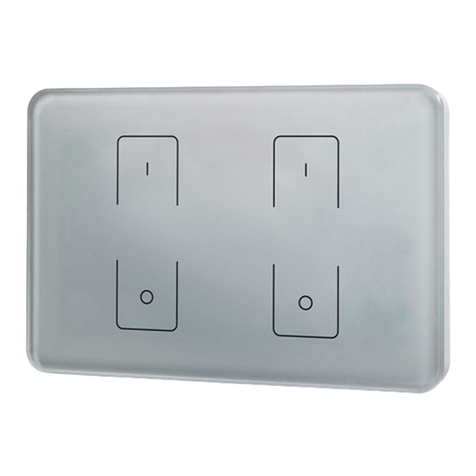
Sunricher
Sunricher SR-2833T1 quick start guide

Taco Electronic Solutions
Taco Electronic Solutions iWorx HPU2 installation guide
